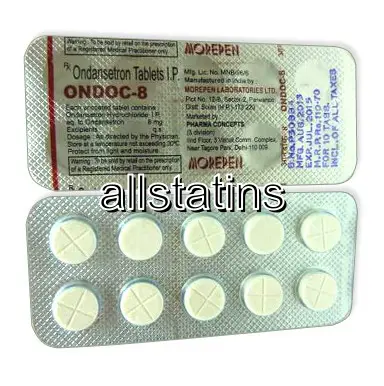| Package | Dosage | Price | Price per Dose | |
|---|---|---|---|---|
| Dosage: 4mg | ||||
| 180 pill | 4mg | $315.73 | $1.76 | |
| 120 pill | 4mg | $215.26 | $1.79 | |
| 90 pill | 4mg | $170.41 | $1.90 | |
| 60 pill | 4mg | $123.77 | $2.06 | |
| 30 pill | 4mg | $69.95 | $2.31 | |
| Dosage: 8mg | ||||
| 180 pill | 8mg | $400.04 | $2.22 | |
| 120 pill | 8mg | $276.26 | $2.30 | |
| 90 pill | 8mg | $220.64 | $2.46 | |
| 60 pill | 8mg | $161.44 | $2.69 | |
| 40 pill | 8mg | $114.80 | $2.87 | |
| 30 pill | 8mg | $89.68 | $3.01 | |

Ondansetron Description
Understanding Ondansetron
Ondansetron is a medication widely used to prevent and treat nausea and vomiting caused by various medical conditions. It belongs to a class of drugs known as serotonin 5-HT3 receptor antagonists. The medication works by blocking specific receptors in the brain and gastrointestinal tract that trigger the nausea reflex. Its effectiveness has made it a popular choice in hospitals, clinics, and pharmacy settings. Patients often turn to ondansetron for relief during chemotherapy, radiation therapy, or after surgeries that involve anesthesia. The drug is available in different forms, including tablets, disintegrating tablets, oral solution, and injectable forms, providing flexibility for varied treatment needs.
How Ondansetron Works
Ondansetron functions by blocking serotonin receptors in the central nervous system and the gastrointestinal tract. Serotonin is a chemical involved in transmitting signals that can induce nausea and vomiting under certain circumstances. During chemotherapy or surgery, the body's release of serotonin increases, triggering the nausea reflex. By inhibiting these signals, ondansetron effectively reduces the sensation of nausea and the urge to vomit. This mechanism not only provides symptomatic relief but also improves patient comfort and compliance with ongoing treatments. The rapid onset of action and high efficacy have contributed to its widespread usage in various clinical scenarios.
Usage and Dosage
Ondansetron’s dosage depends on the reason for use, patient age, and overall health condition. For adults, the typical dose for preventing nausea associated with chemotherapy is 8 mg administered before chemotherapy begins, with additional doses as needed. For other causes of nausea, doctors tailor the dose individually. It is critical for patients to follow their healthcare provider’s instructions and not to alter the prescribed dose. The medication can be taken with or without food, although taking it with food can help minimize stomach upset. For injectable forms, healthcare professionals determine the appropriate dose and administer it in a clinical setting. Patients should always inform their doctor about any other medications they are taking to avoid potential interactions.
Potential Benefits and Effectiveness
Many patients find ondansetron to be highly effective in controlling nausea and preventing vomiting. Its rapid action can provide relief within minutes to hours, especially when given via injection. The medication is particularly valuable during chemotherapy treatments, where nausea can be severe and debilitating. It also has an important role in post-operative care, helping patients recover more comfortably. The high success rate and tolerability make ondansetron a preferred choice for managing nausea caused by various medical interventions. Additionally, its safety profile is generally favorable, with most side effects being mild and transient.
Possible Side Effects and Precautions
Although ondansetron is well-tolerated by most patients, some may experience side effects. Common adverse reactions include headache, dizziness, fatigue, constipation, and some gastrointestinal disturbances. Rare but serious side effects can occur, such as allergic reactions, abnormal heart rhythms, or serotonin syndrome, especially if combined with other serotonergic drugs. Patients with liver problems or those on other medications that affect heart rhythm should exercise caution and consult their healthcare provider. It is important to inform your doctor of any pre-existing health conditions or medications to ensure safe use. Pregnant and breastfeeding women should discuss the potential risks and benefits with their healthcare provider before using ondansetron.
